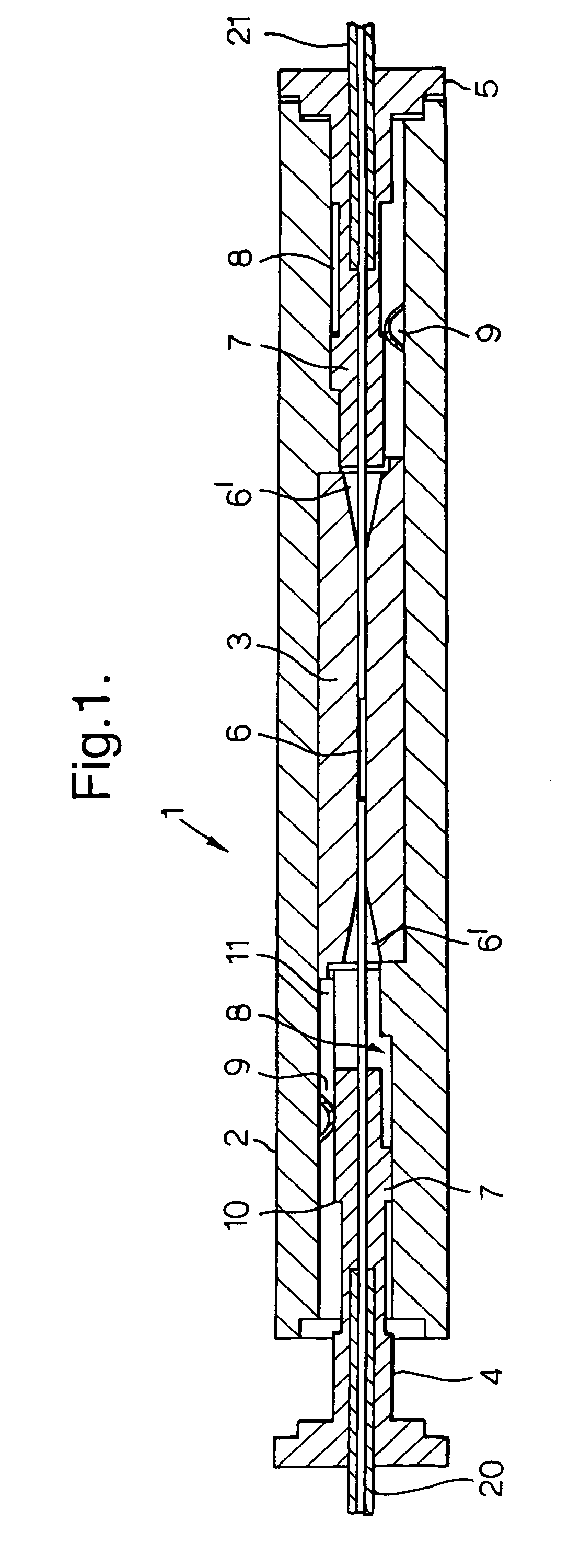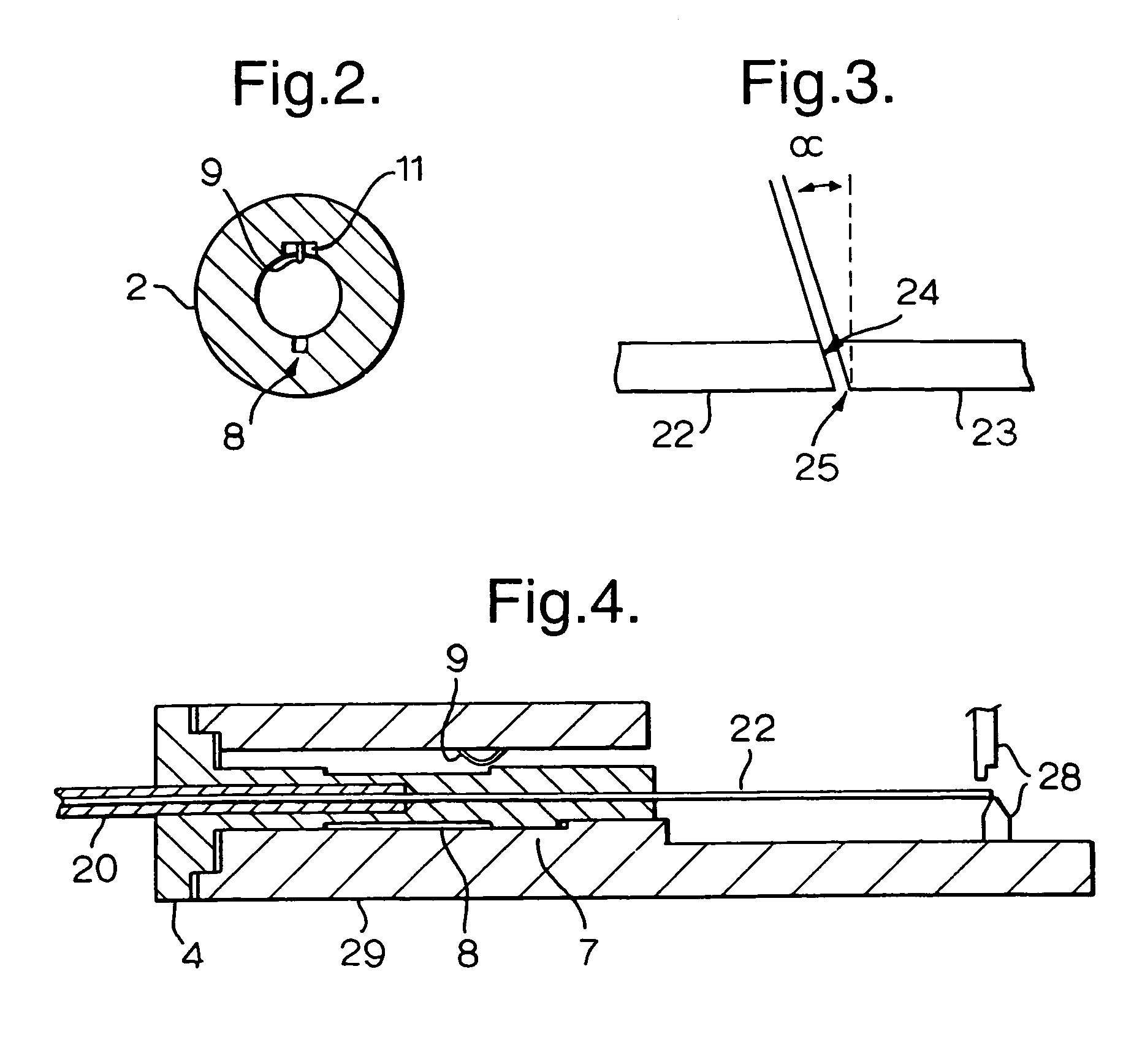Method and apparatus for splicing optical fibres
a technology of optical fibres and splicing devices, applied in the field of splicing optical fibres, can solve the problems of damage to the fibre end face, loss of advantageous effects of angled cleaving, and high cost and time consumption
- Summary
- Abstract
- Description
- Claims
- Application Information
AI Technical Summary
Benefits of technology
Problems solved by technology
Method used
Image
Examples
Embodiment Construction
[0027]The mechanical splice 1 shown merely by way of non-limiting example in FIG. 1 comprises a substantially tubular body 2, an alignment member 3 and two keying elements 4 and 5. Optical fibres 20, 21 are accommodated in the keying elements 4, 5 respectively. As shown in FIG. 1, the cladding has been removed from the end portions of the fibres. The fibre ends meet in the alignment member 3 which is provided with a V-shaped groove 6 for accommodating and aligning the fibre ends. The groove has widened sections 6′ at the ends of the alignment member 3 which allow the fibres to buckle in those areas so as to maintain a compressive force on the abutting fibre end faces.
[0028]In accordance with the present invention, the splicing device 1 is provided with a mechanism for defining and maintaining the angular orientation of the optical fibres. This mechanism comprises keying ridges or protrusions 7 provided on the keying elements 4, 5, which protrusions can be accommodated in keying slot...
PUM
 Login to View More
Login to View More Abstract
Description
Claims
Application Information
 Login to View More
Login to View More - R&D
- Intellectual Property
- Life Sciences
- Materials
- Tech Scout
- Unparalleled Data Quality
- Higher Quality Content
- 60% Fewer Hallucinations
Browse by: Latest US Patents, China's latest patents, Technical Efficacy Thesaurus, Application Domain, Technology Topic, Popular Technical Reports.
© 2025 PatSnap. All rights reserved.Legal|Privacy policy|Modern Slavery Act Transparency Statement|Sitemap|About US| Contact US: help@patsnap.com



